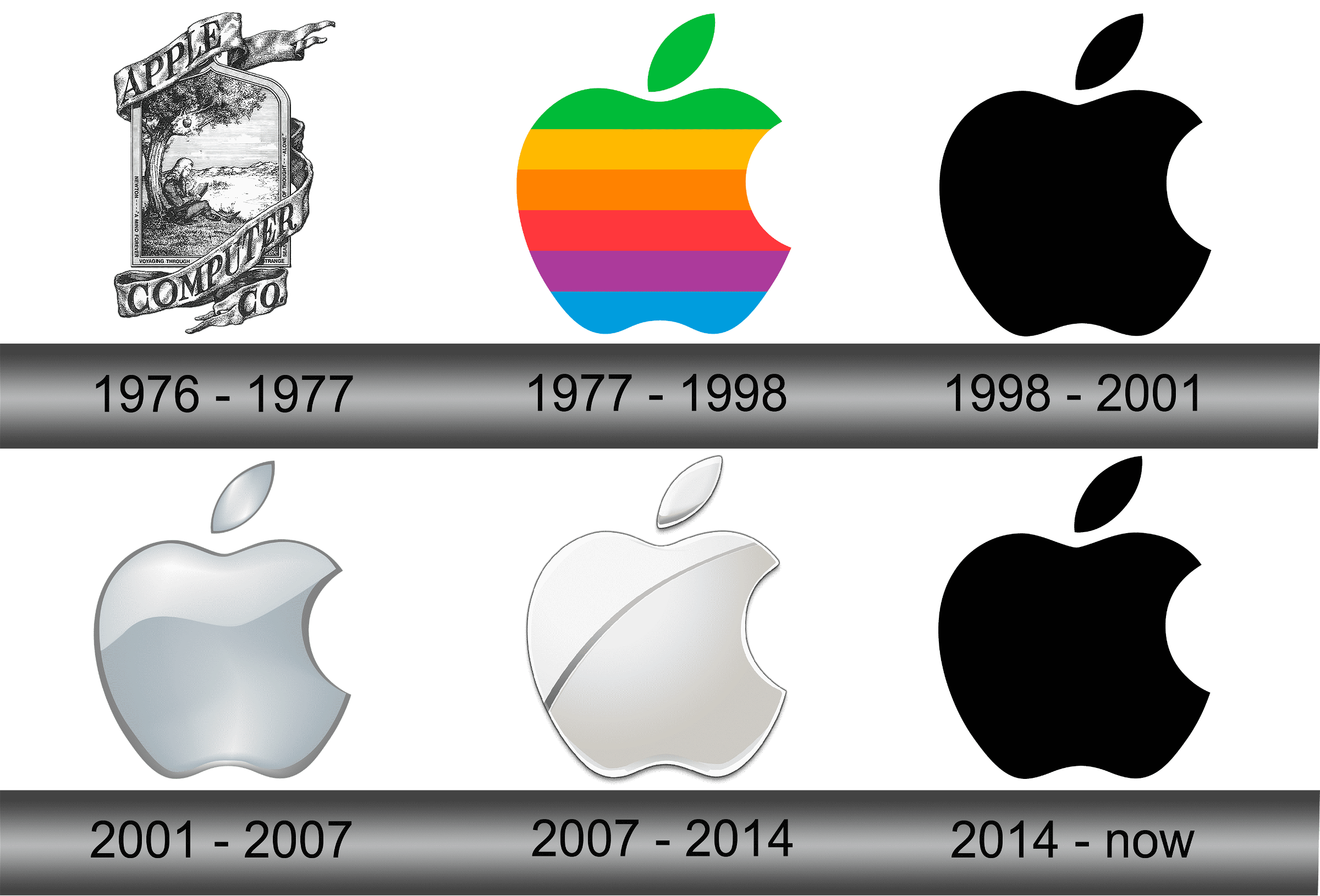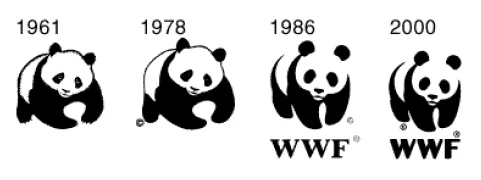Logo Evolution of The World’s Iconic Brands – History and Development
by Waqar Ahmed on Tuesday Feb 06
As they say, “A logo doesn’t sell, it identifies.” A logo’s evolution from its inception to its current form is a testament to the brand’s growth, struggles, and triumphs. From time to time, each big company needs a new logo, a new brand philosophy, and a new set of goals. As a result of these changes, we can gain a deeper understanding of the history of modern marketing and design, as well as the development of companies throughout history. In exploring the evolution of these logos, we also observe the prevailing Logo design trends for 2024, reflecting the contemporary ethos and aesthetics shaping the visual identities of brands.
Behind every logo change, there’s a story of innovation, strategic rebranding, and a relentless pursuit of connecting with the audience on a deeper level. Today, we delve into the logo evolution of some famous brands, uncovering the history and development that led to the symbols we recognize so well.
1. Nestle
2. Apple
3. Nokia
4. Coca-Cola
5. Starbucks
6. WWF – World Wide Fund for Nature
Nestlé

This Swiss holding company produces food products in many different varieties, but its name does not translate to “nest”. Originally, Nestlé’s logo did not include nests or birds, as it was simply the surname of its founder Henri Nestlé. Starting in 1868, the original logo was a simple representation of Henri Nestlé’s family coat of arms, featuring a single bird on a nest. This image was a clever play on the founder’s name, which means ‘nest’ in German. Over the years, the logo has been refined but the essence remains the same. The current logo, with birds feeding in the nest, symbolizes care, nourishment, and familial warmth, echoing the company’s commitment to providing high-quality food products worldwide. What’s fascinating is how Nestlé managed to maintain this core imagery, ensuring a consistent brand identity across the globe.
Apple

Contrary to popular belief, Apple’s first logo wasn’t the sleek Apple silhouette we know today. In 1976, Steve Jobs commissioned a logo that featured Sir Isaac Newton sitting under an apple tree, a nod to the gravitational theory. However, this intricate logo was soon considered impractical. Steve Jobs, aiming for simplicity, introduced the iconic bitten apple in 1977. The bite served a practical purpose too, avoiding confusion with a cherry. This logo has evolved into a symbol of innovation and elegance, making Apple products instantly recognisable worldwide.
Nokia

Nokia, the telecommunications giant from Finland, has a fascinating logo evolution story that traces back to 1865. Initially a paper mill operation, Nokia’s logo has undergone several transformations, reflecting the company’s transition into the technology sector. The most iconic logo, known for the ‘Nokia Connecting People’ slogan, showcases how effectively a logo can communicate a brand’s mission. Today, despite the ups and downs in its business, Nokia’s logo remains a powerful emblem of connectivity and reliability.
Coca-Cola

Coca-Cola’s logo is a prime example of timeless design. Since its creation in 1886, the logo has undergone minor modifications but has largely retained its original Spencerian script trademark. This consistency has played a crucial role in making Coca-Cola one of the most recognized brands globally. The logo’s evolution is minimal, demonstrating that sometimes, stability can be key to a brand’s identity, especially when it resonates so well with the audience.
Starbucks

Starbucks’ history of logo evolution is the most amusing. Featuring the Greek mythology character Sirenosis, the logo features two-tailed Sirenosis. When the logo was designed first, the mermaid was tall and wore both tails and a full bust. The second version, used between 1987 and 1992, depicted a mermaid with curly hair covering her bosom in Starbucks’ merger with Il Giornale. With each redesign, Starbucks aimed to focus more on the aspect of heritage and tradition. What stayed constant was the siren, now synonymous with the coffeehouse chain. This simplification strategy helped Starbucks maintain its iconic brand identity while adapting to the modern era.
WWF-World Wide Fund for Nature

The World Wide Fund for Nature, or WWF, is known for its iconic panda logo. Created in 1961, the logo was inspired by Chi-Chi, a giant panda that had arrived at the London Zoo. The WWF logo is a brilliant example of using wildlife imagery to communicate the organization’s mission of conservation. Over the years, the logo has been simplified, but the powerful image of the panda remains central, symbolizing the urgent need for wildlife conservation efforts worldwide.
In the tapestry of global commerce and culture, logos serve as both anchors and compasses, guiding brands through changing times while keeping them grounded in their core identities. As we’ve seen the logo evolution through these iconic examples, a well-conceived logo is more than just a marketing tool; it’s a story, a strategy, and sometimes, even the soul of a brand.
If your brand seeks to embark on a journey of transformation and enduring relevance, the expertise of the best logo design company in Bangalore can be your beacon.
Disclaimer: The content within this publication incorporates visuals obtained from external sources to enhance the overall storytelling. We strive to provide accurate credit to the original creators. Should you be the rightful owner of any visual content and seek alternative acknowledgement or wish for its removal, please do not hesitate to contact us.


